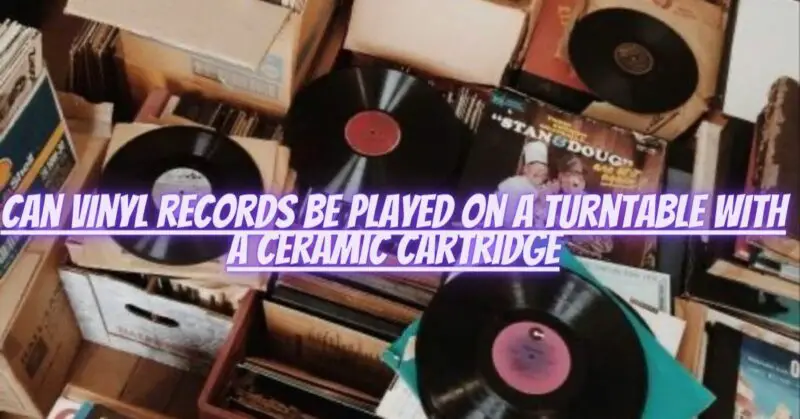Vinyl records have made a remarkable comeback, captivating music enthusiasts with their warm and authentic sound. To experience the rich tones and nuances of vinyl, a quality turntable is essential. While some turntables come with ceramic cartridges, there is ongoing debate about their suitability for vinyl playback. In this article, we will delve into the topic of playing vinyl records on a turntable with a ceramic cartridge, exploring the benefits, limitations, and considerations for achieving an enjoyable listening experience.
Understanding Ceramic Cartridges: Ceramic cartridges are a type of phono cartridge that use a ceramic element to convert the mechanical vibrations of the stylus into electrical signals. Unlike moving magnet (MM) or moving coil (MC) cartridges, which are more commonly found in higher-end turntables, ceramic cartridges have some distinct characteristics.
- Sound Quality Considerations: Ceramic cartridges are generally known for their robust output and extended high-frequency response. They often produce a bright and forward sound signature, emphasizing the upper frequencies. This can result in a more aggressive or “crisp” sound reproduction, which some listeners may prefer for certain genres or musical styles.
- Limitations and Challenges: Ceramic cartridges have certain limitations that may impact the playback of vinyl records:
a. Tracking Ability: Ceramic cartridges can be less forgiving when it comes to tracking imperfections in vinyl records. They may struggle with tracking inner grooves or records with worn or damaged surfaces, potentially leading to skipping or excessive surface noise.
b. Lack of Detail: Compared to higher-end moving magnet or moving coil cartridges, ceramic cartridges may not capture the same level of detail and subtleties in the music. This can result in a less nuanced and precise sound reproduction.
c. Stylus Wear: Ceramic cartridges tend to have harder stylus tips, which can potentially cause more wear on vinyl records over time. Proper care and maintenance of both the cartridge and records are important to minimize any potential damage.
- Optimizing the Experience: While ceramic cartridges may have limitations, there are steps you can take to optimize your vinyl playback experience:
a. Proper Alignment and Setup: Ensure the ceramic cartridge is aligned and set up correctly according to the manufacturer’s instructions. This includes setting the correct tracking force, anti-skate, and tonearm height. Proper alignment helps to maximize sound quality and minimize tracking issues.
b. Record Care: Clean your vinyl records regularly using a record brush or cleaning solution to remove dust and debris. This helps ensure optimal playback and reduces the risk of excessive wear on both the stylus and records.
c. Consider Upgrading: If you find that the sound quality or tracking performance of the ceramic cartridge is not meeting your expectations, you may consider upgrading to a moving magnet or moving coil cartridge. These cartridges often offer superior tracking ability, finer detail reproduction, and compatibility with a wider range of vinyl records.
Conclusion: Playing vinyl records on a turntable with a ceramic cartridge is possible, but it’s important to understand the characteristics and limitations of these cartridges. While they may produce a bright and forward sound, they can be less forgiving in terms of tracking ability and may not capture the same level of detail as higher-end cartridges. By properly aligning the cartridge, caring for your records, and considering potential upgrades, you can optimize your vinyl playback experience and enjoy the distinctive charm of vinyl records on your turntable with a ceramic cartridge.


